Vintage Treasures: The Bantam Spectra Élisabeth Vonarburg
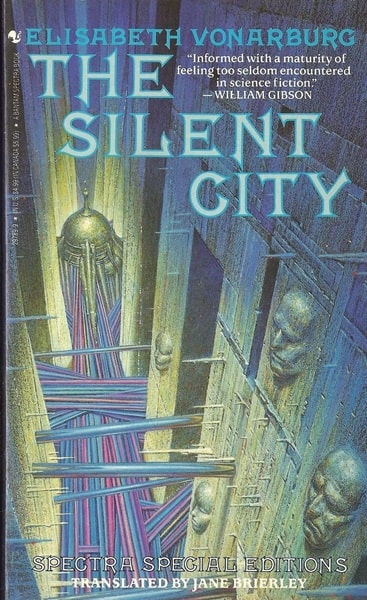 |
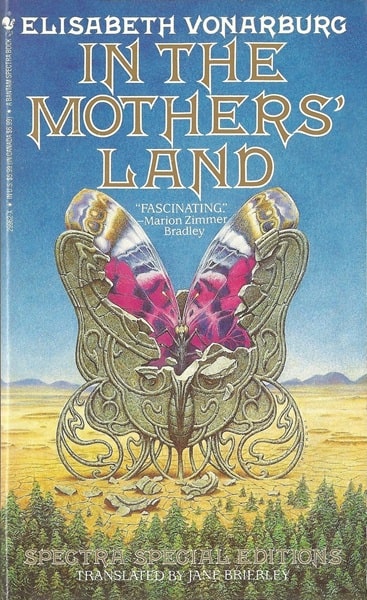 |
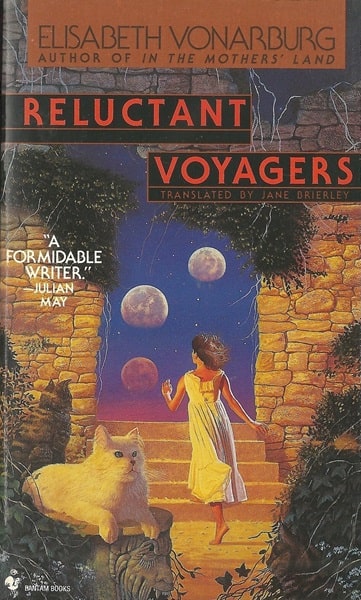 |
The Bantam Spectra Élisabeth Vonarburg: The Silent City (August 1992),
In the Mothers’ Land (December 1992), and Reluctant Voyagers (March 1995).
Covers by Oscar Chichoni, Oscar Chichoni, and Stephen Youll
I left Canada to attend grad school at the University of Illinois in Urbana Champaign in August 1987, and when I did I lost touch with much of the vibrant Canadian SF scene. There were a few Canadian authors celebrated in the States — folks like Charles de Lint, Donald Kingsbury, Julie Czerneda, Peter Watts, Guy Gavriel Kay, and a handful of others — but they were the exception. I had to get used to not hearing favorite Canadian acts on the radio (like The Box and Gowan), and I gradually got used to a lack of Canadian representation in bookstores as well.
That’s why it was such a delight to see French Canadian author Élisabeth Vonarburg experience a brief but marvelous period in the sun in the mid-90s, when Bantam Spectra translated three of her most famous novels into English, and brought them to the attention of grateful American readers.
[Click the images for a broad spectrum of sizes.]
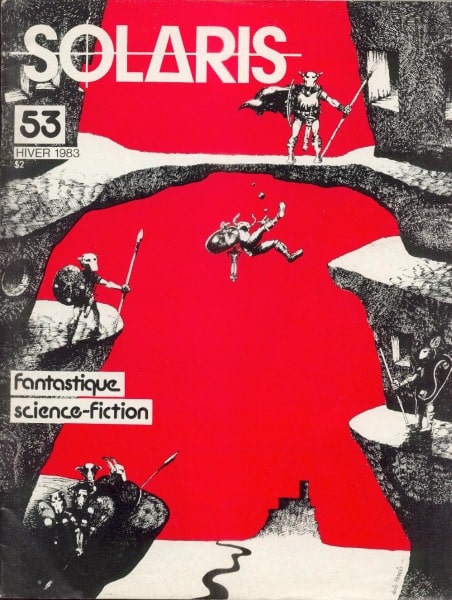 |
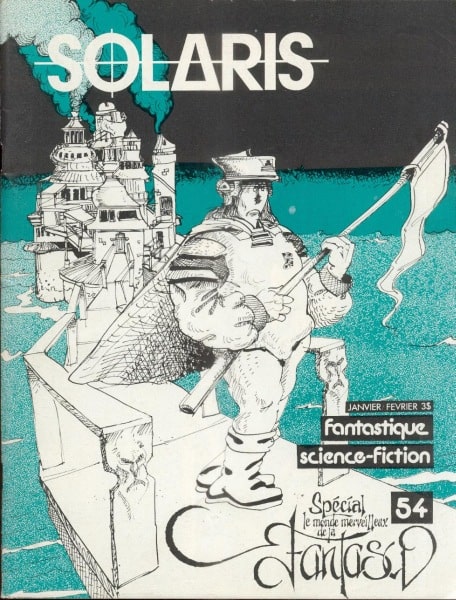 |
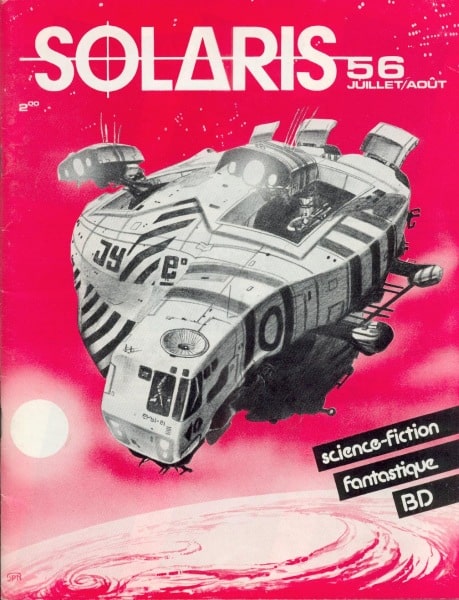 |
Solaris issues edited by Vonarburg: #53, 54, and 56 (1983-1984).
Covers by Louis Paradis, Benoït Laverdière, and Jean-Pierre Normand
Élisabeth Vonarburg was born in Paris, but she’s lived in the thriving northern metropolis of Chicoutimi in Quebec since 1973. She made her name early as the literary director of the acclaimed French-Canadian magazine Solaris, the oldest French language science-fiction and fantasy magazine in the world. She’s received many literary honors over the years, including “Le Grand Prix de la SF française” in 1982, and a Philip K. Dick Award special citation for In the Mothers’ Land in 1993.
Vonarburg’s first novel, Le Silence de la Cité (The Silent City), was published by Denoël in October 1981, and translated by Jane Brierley for its first English publication, by Tesseract Books in Canada in 1988. It made an immediate impression on North American audiences, enough to gain the attention of Lou Aronica and his team of editors at the new Spectra imprint of Bantam Books in the US.
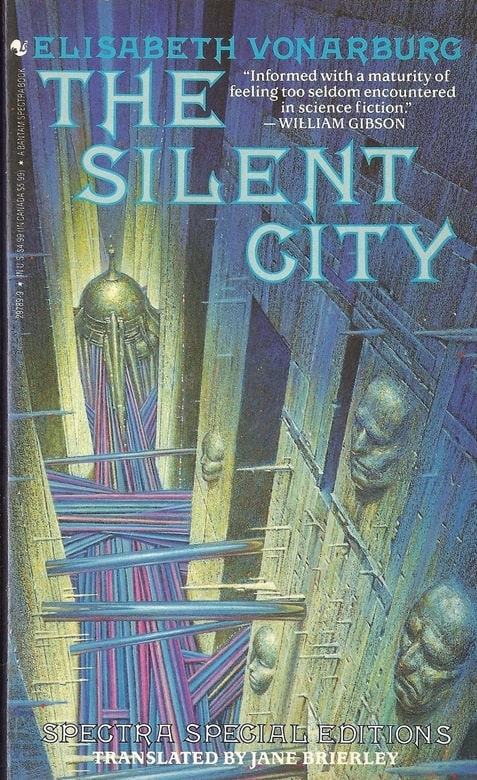 |
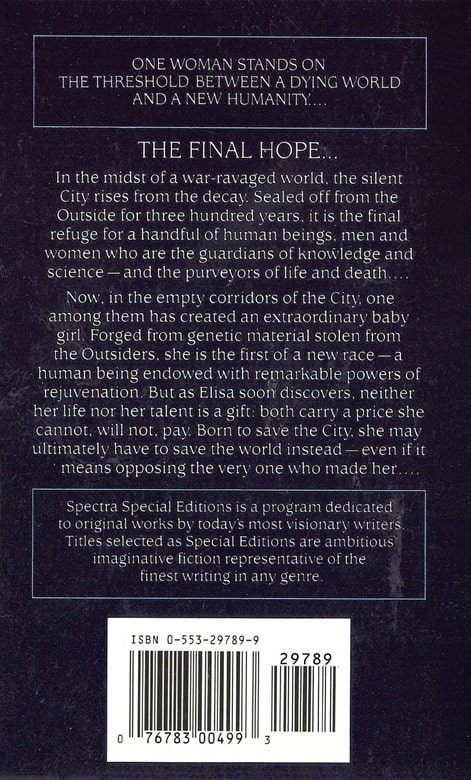 |
The Silent City (Bantam Spectra, August 1992). Cover by Oscar Chichoni
The Silent City was published by Bantam Spectra in August 1992, four years after its Canadian release. With its disturbing themes of incest and body mutilation in a post-apocalyptic setting, American audiences didn’t quite know what to make of it. Here’s my favorite review, from Nic Clarke at Eve’s Alexandria.
At just over 250 pages, it’s a slim novel – by the standards of today’s science fiction, that is – but it has atmosphere and interesting themes to spare…. The overriding image I’ve retained from the book is of the titular City itself: a vast, gleaming sanctuary for knowledge and the knowledgeable, last bastion of civilisation in a post-apocalyptic landscape…
They conduct strange experiments upon the one genuinely young person left among them: curious, trusting Elisa, the last child born in the City. There’s a twisted fairy tale quality to the cocoon that is Elisa’s early life. When Paul (her ‘Papa’) isn’t slicing her skin in the name of science – for reasons that remain opaque to her for many years – he throws a masquerade party to celebrate the progress of his research into her uncanny self-healing ability… An unwelcome guest promptly turns up to the party and declares,
“I see you forgot to invite me… I’ve a gift for the little princess, nevertheless. When she turns twenty, she’ll prick her finger and live forever.”
Another, friendlier guest responds by mitigating the curse into a mere 200+ years. Nor does the creepiness of Paul’s exploitation of Elisa end with the experiments: as Elisa grows from young innocence to, well, slightly older innocence, the pair become lovers… The rest of the book follows Elisa as she flees the City (and Paul) for Outside…
But Outside it is less freeing than it might be, because the regressive post-apocalyptic culture that has developed in the Outside is – with regional variations – deeply and viscerally hostile to women, who are blamed for the genetic mutations that have blighted the human population. Men have been particularly badly hit, such that they are now scarce; women, numerous and hated, are little better than slaves…
Rich and fascinating… it has plenty of food for thought, and some primal imagery besides.
Read the full review here.
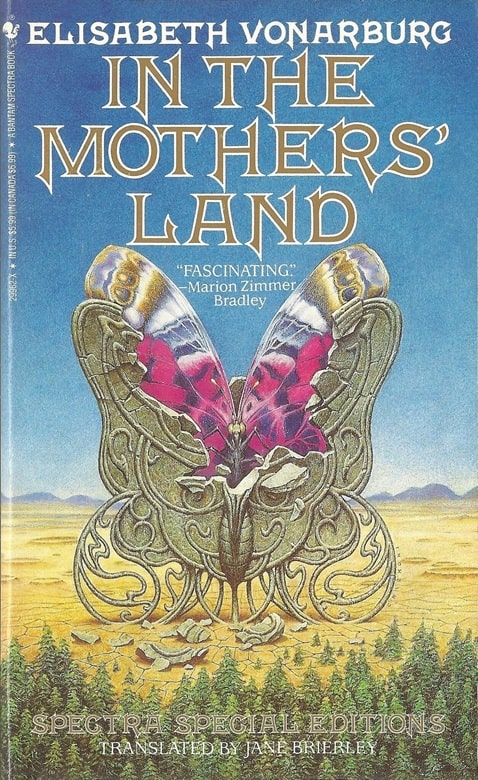 |
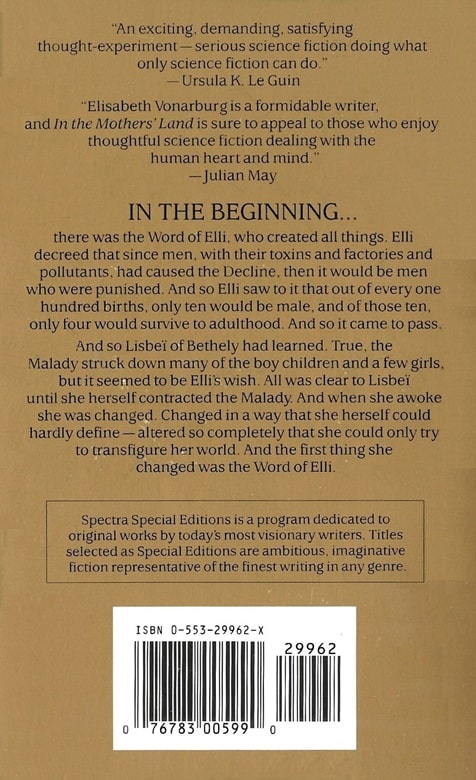 |
In the Mothers’ Land (Bantam Spectra, December 1992). Cover by Oscar Chichoni
In the Mothers’ Land, which shares a setting with The Silent City, is perhaps Vonarburg’s most widely-read English language novel. It was nominated for the Tiptree Award, won the Aurora Award for Best Long-Form Work in French, and received a special citation for the English translation from the Philip K. Dick Award committee in 1993.
It continues to be read and discussed today. I was delighted to find this brief 2010 review at Goodreads from none other than Lynn Abbey.
When I realized this was a post-ecological disaster, matriarchal, communal story with a crypto-Christian overlay, I almost set the book aside. I’m glad I didn’t. Vonarburg put a lot of thought into her world-building and then peoples it with well-meaning, fallible characters… there’s apparently a prequel, The Silent City, which I haven’t been able to track down yet.
Most of the reviews at Goodreads are in French, but you will find the occasional English language commentary, like this one from Ry Herman.
Truly, truly excellent far future SF about changes occurring in a matriarchal society. Complex and spanning years, this is a masterpiece from an author who should be better known in the English-speaking world.
But the best summary I’ve found comes from prolific reviewer William Leight.
In the Mother’s Land features a blurb by Ursula Le Guin, a sure sign of quality, and is rather similar to Le Guin’s “social science fiction” in the way that it invents a society and then watches it change over a period of years. The book follows Lisbei, the protagonist, through her whole life, allowing Vonarburg to introduce her post-apocalyptic future through the eyes of a child…
The society is, as the title suggests, female-dominated, partly because pollution (or something) means that very few males are born, and partly because the dominant religion, a sort of inverted Christianity, blames the downfall from an original utopia (our society today, about which not much is known in this imagined future thanks to a series of catastrophes) on men… Much like Le Guin, Vonarburg excels at inventing and describing her society, bad sides and good, as well as its fissures and fractures, and she does a good job with her characters as well, especially, of course, Lisbei…
As Lisbei slowly finds a place in the world, she loses the beliefs of her childhood and joins a liberalizing political movement that promotes, among other things, an improvement in the status of men. Along the way, we learn a lot about the society and its culture… And though the book is clearly quite feminist in its conception, it’s never a polemic: the bad guys (insofar as there are any) are the ones most closely wedded to the precepts of its non-violent, mother goddess religion, and so the most determined that men should be kept in their place… on the whole it was extremely well done.
Read William’s full review here.
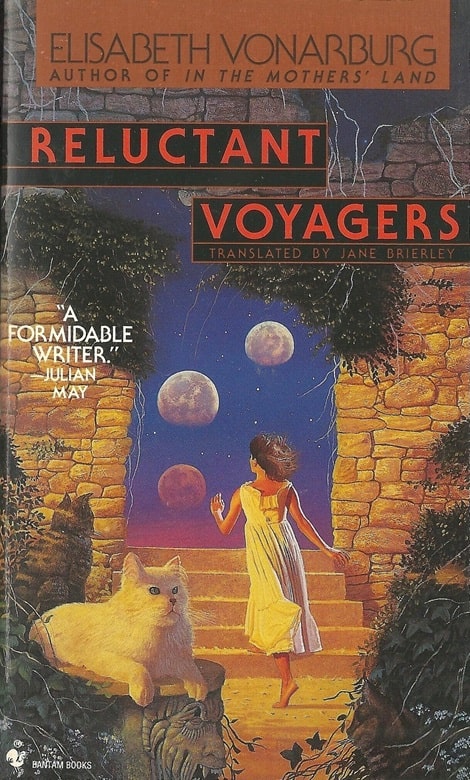 |
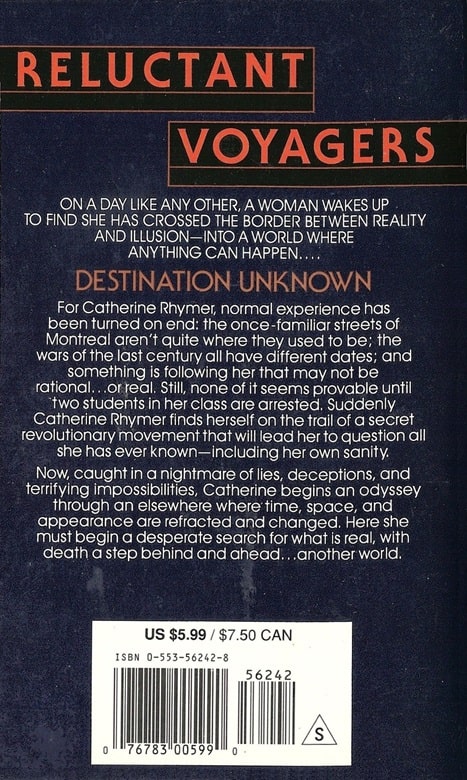 |
Reluctant Voyagers (Bantam Spectra, March 1995). Cover by Stephen Youll
Reluctant Voyagers, the story of a woman who finds herself unexpectedly traveling between realities, received its first English translation in a Bantam Spectra edition in March 1995. There’s a fine discussion of the novel at Buried in Print.
The early pages of Reluctant Voyagers are not completely foreign; they’re set in Montreal and even if you don’t know the city well enough to know whether the author has messed with the geography, you can imagine the wintry walk… And you can imagine the disorientation Catherine experiences when the streets suddenly seem to slip away from her. It is no longer the city that she knows. Not quite…
Catherine is having trouble remembering the events of the past too. Not just the historical past, but her own personal past, events that she lived through… Over time, however, this memory loss becomes more than irritating. And, as if she needed another reason to feel like she’s going crazy, she starts seeing things — people, even — that others around her cannot …
There are a lot of ideas therein…. Or you can simply read it for Catherine’s story which, despite the amount of detail in the narrative which brings the novel to nearly 500 pages, is quite compelling as she works to unravel the truths and un-truths surrounding her in this strangely-familiar world.
Chase scenes, undercover operations, revolutionary hideouts: it’s like MI-5, but with different accents and secret meetings that might be in alternate dimensions… But enough answers are offered to leave readers satisfied. And it’s clear why so many people make such a fuss of Elizabeth Vonarburg’s fiction.
Reluctant Voyagers was the last of Vonarburg’s novels to be widely distributed in the US. She continues to be translated into English in her home country, however, where the first two novels of her ambitious Tyranaël series were warmly received: Dreams of the Sea (Tesseract Books, December 2003) and A Game of Perfection (Edge Science Fiction, 2005).
Here’s the complete publishing details for the Bantam Spectra Élisabeth Vonarburg.
The Silent City (261 pages, $4.99 in paperback, August 1992) — cover by Oscar Chichoni
In the Mothers’ Land (487 pages, $5.99 in paperback, December 1992) — cover by Oscar Chichoni
Reluctant Voyagers (469 pages, $5.99 in paperback, March 1995) — cover by Stephen Youll
The Silent City contains a 16-page preview of In the Mothers’ Land in the back.
Reluctant Voyagers was reprinted in hardcover by Tesseract Books in 2002. The others have been out of print for over 30 years. There are no digital editions.
See all our recent Vintage Treasures here.
The Oscar Chichoni cover for In The Mother’s Land is beautiful. I think I have Blood From A Stone in my to-be-read mountain.
I looked for the clip of her on Prisoners Of Gravity and there’s quite a lot of her on youtube.
These sound interesting, but I have to admit that my first, nostalgic reaction is prompted by the title font used on the first two, which I automatically associate with old Ace Edgar Rice Burroughs paperbacks.